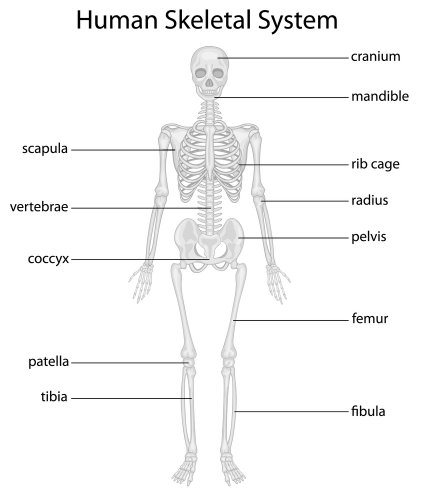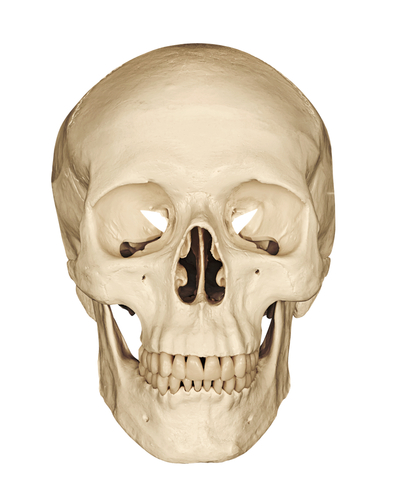Did you know we have roughly 206 bones in our body?!
These 206 bones fit together to form our skeleton.
.jpg)
Our bones are pretty awesome; believe it or not, they’re actually living! I guess when we think of bones, we tend to think of bones that have been dead and buried for thousands of years, like dinosaur bones! Bones are living because they can grow and if we were to accidentally break, or fracture a bone, it would be able to repair itself.

The bones in our skeleton are all important of course, but some of the main bones to remember are our vertebrae which are small bones that make up our backbone, the rib cage in our chest, our skull and the femur in our thigh.
Can you find these bones in the image above?
Did you know that the femur is actually the longest and strongest bone in the body? The femur helps to carry our body weight and allows us to move around easily. This is known as the function or job, of this particular bone. Our bones can have many different functions.

The bones mentioned above are important because they have super-important functions. For example, the backbone is made up of smaller bones called vertebrae. The backbone's main function is to protect the spinal cord which sends nerve signals to different parts of the body.
For example, if you accidently touched a very hot pan on the cooker, you would move your hand away very quickly. That's because the brain sends nerve signals down your spinal cord to your arm causing it to move away, this is to protect you from getting burnt!

The skull's function is to protect the brain. All the pieces in the skull slot together like a jigsaw puzzle making the skull very tough.

The rib cage protects the organs found in our chest, like the lungs and heart. The bones of the rib cage are strong but flexible, as they move when we inhale and exhale.
All of these organs are needed to keep us alive, so they need to be protected.
The skeleton also provides us with support. For example our backbone allows us to stand upright and spreads our body weight out. It also keeps our body shape.
Another function of our skeleton is to allow movement. Some of our bones often meet at points called joints.
Joints have ligaments, tendons and muscles and these allow us to bend and twist, for example our knee cap (or the patella) allows us to bend our legs.
.jpg)
Our bones also help to make our blood. Millions of blood cells die every second. New red blood cells and white blood cells are made inside our longer bones (like the femur), this is called bone marrow. Red blood cells help to transport oxygen around our body and white blood cells are needed to destroy bacteria and viruses.

In this activity, we're going to look at how the structure of the skeleton is related to its functions.








